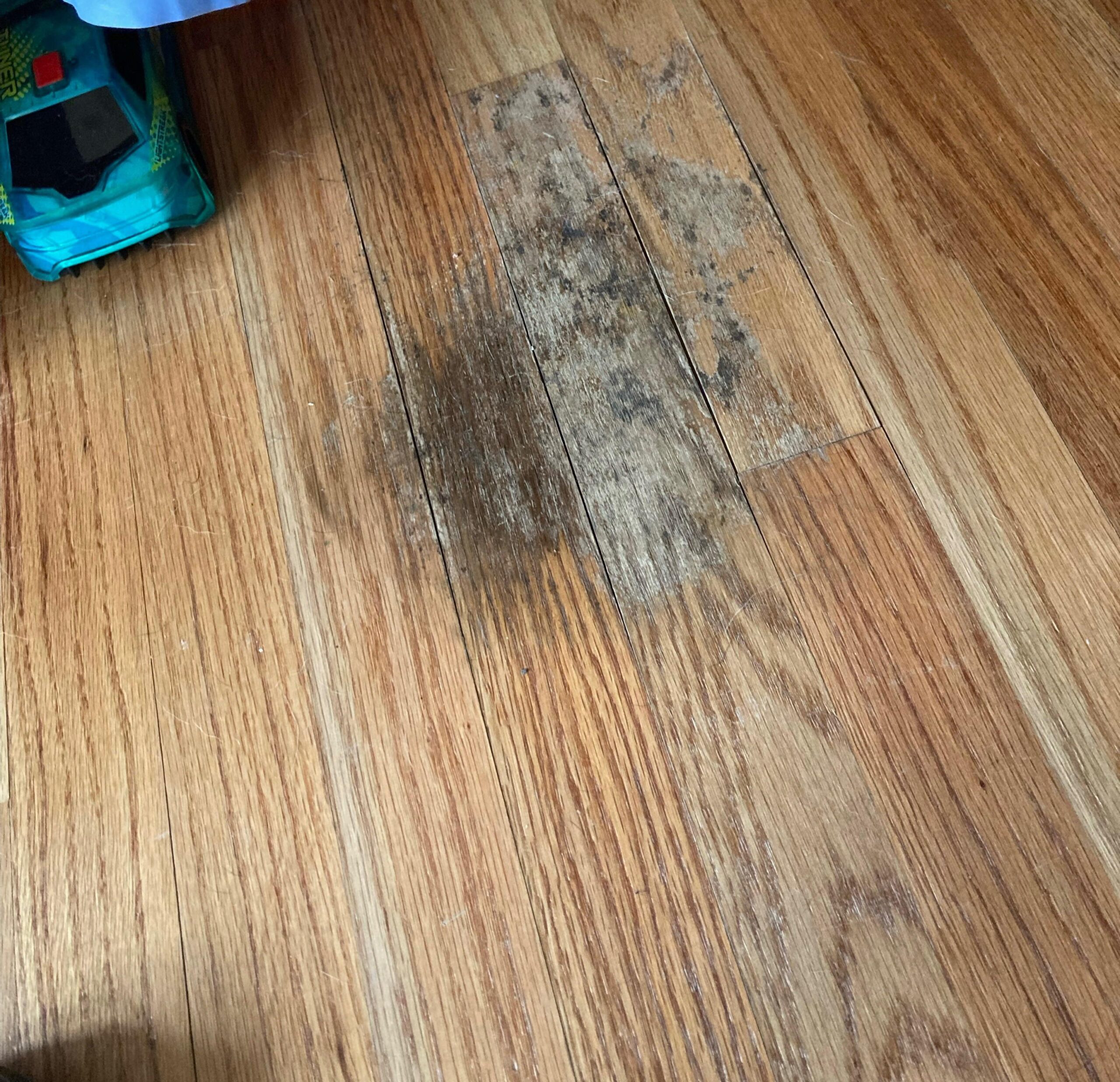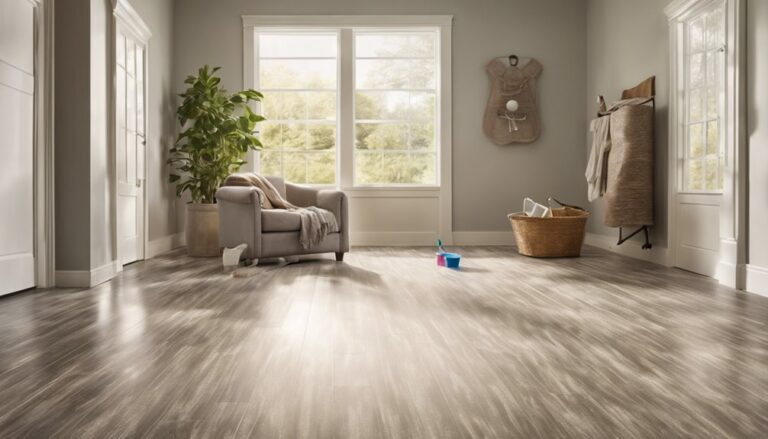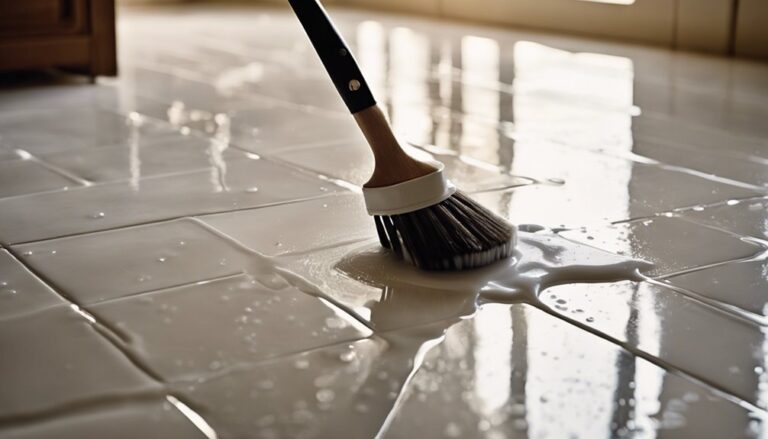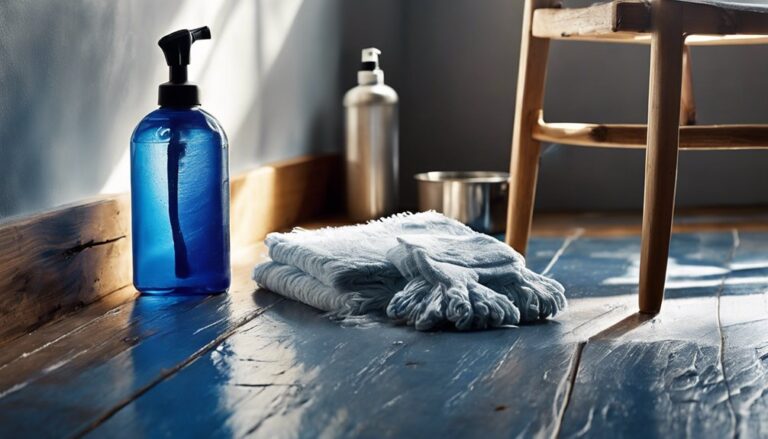You’ve just discovered water damage on your beautiful hardwood floors, and it feels like a nightmare. That sinking feeling, wondering if your prized investment is ruined, can be overwhelming.
But don’t worry, you’re not alone, and there’s hope. In this guide, you’ll learn how to fix water-damaged hardwood floors efficiently, ensuring your home remains a cozy and inviting space. Imagine walking across those floors again, smooth and gleaming, as if the damage never happened.
Stick with us, and you’ll be equipped with practical steps and insider tips to restore your floors to their former glory. Let’s turn that worry into action, and get your home back to its best.

Identify Water Damage
Dégâts d'eau can harm hardwood floors. Watch for signs like discoloration. Dark spots may appear on the surface. Warping is another sign. Boards might bend or twist. Musty smell is also a clue. It means water is trapped. Loose boards could be a sign too. Water might weaken glue or nails.
Check how much damage there is. Look at the floor closely. Measure the area that is affected. Use a moisture meter. It tells how wet the wood is. Compare the wet area to dry parts. This helps you know what needs fixing. Sometimes the damage is only on the surface. Other times it goes deep. Knowing this helps decide what to do next.
Immediate Actions
First, find the source of the water. It might be a leak or spill. Turn off any running water. Use towels or a mop to soak up excess water. Ensure all water is stopped before moving to the next step.
Drying quickly helps save your floors. Open windows and doors for air flow. Use fans to blow air on the wet spots. A dehumidifier is useful to reduce moisture in the air. Move furniture to prevent further damage. Keep the area dry and ventilated for a few days. Check for any remaining moisture regularly.
Drying The Floor
Start by placing fans around the room. This helps the floor dry faster. Set them on high. Blow air across the wet areas. A déshumidificateur is very useful too. It pulls moisture from the air. Place it in the center of the room. Keep doors and windows closed. This helps the dehumidifier work better. Check the water container often. Empty it when full. Use both fans and dehumidifiers together for best results.
Open windows for fresh air. Sunlight is a great dryer. Let the sun reach the floor. Move rugs and furniture out of the way. This helps air flow freely. A dry mop can help too. Use it to soak up extra water. Change the mop head when it gets wet. Keep windows open until the floor is dry.
Repairing Minor Damage
Dégâts d'eau can make wood floors look bad. Sanding helps make them smooth again. Use a sander to gently remove the damaged top layer. Wear a mask for dust protection. After sanding, faire le ménage the floor. Get rid of all dust and dirt. Refinishing adds a new shine to the floor. Use a finition that matches your original floor. Apply it evenly with a brush or roller. Let the floor dry completely. This makes the floor look new again. Repeat the steps if needed.
Some damage needs more work. Replacing sections of the floor can help. Measure the damaged area carefully. Cut out the bad wood with a saw. Find matching wood pieces. Fit them into the hole. Secure them with nails or glue. Sand the edges for smoothness. Refinish the new pieces to blend in. This fixes the damaged spots well. Ensure the new wood matches the old one. This keeps the floor looking nice.
Addressing Severe Damage
Severe damage to hardwood floors may need a full replacement. This is a big job. All damaged boards must be removed. New boards will be installed in their place. This can take time. A professional can help. They have the right tools. They also know the best methods. It’s important to choose the right wood. Match it with the rest of your house. This keeps the look consistent et beautiful.
Professional restoration services are great for fixing floors. Experts know how to handle severe damage. They use special tools and techniques. This makes the floor look new again. Professional help is often faster. It can also be more effective. They ensure the job is done right. Hiring an expert can save you time and stress. This can be the best choice for many homeowners.
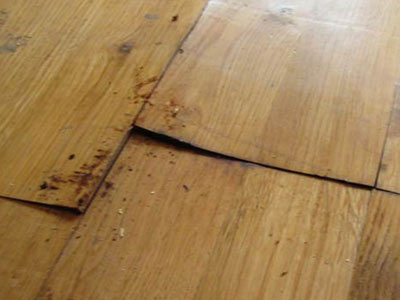
Preventing Future Damage
Utiliser produits d'étanchéité imperméables on your floors. These protect wood from water. Apply them every year for best results. Consider installing waterproof mats at entrances. These catch water from wet shoes.
Utiliser waterproof barriers under furniture. They prevent water from reaching floors. Choose furniture with water-resistant legs. This avoids water contact.
Clean spills quickly. Use a soft cloth. Never let water sit on the floor. Sweep floors often. Dirt can scratch and harm wood.
Utiliser floor-friendly cleaners. Harsh chemicals can damage wood. Check for leaks regularly. Fix them fast to avoid damage. Keep humidity levels stable. This helps prevent wood from warping.

Questions fréquemment posées
How Do I Identify Water Damage On Hardwood Floors?
Water damage on hardwood floors often appears as discoloration, warping, or swelling. You may notice dark spots or uneven surfaces. Check for musty odors and visible mold as well. Early detection is crucial to prevent further damage. Regularly inspect areas near windows, sinks, and appliances for signs of moisture.
Can Water Damaged Floors Be Repaired?
Yes, water damaged floors can often be repaired, depending on severity. Minor damage may require sanding and refinishing. For significant issues, replacing affected planks might be necessary. Ensure the source of moisture is addressed to prevent recurrence. Professional assessment can help determine the best repair approach for your situation.
What Tools Are Needed For Floor Repair?
Basic tools for repairing water damaged floors include a moisture meter, pry bar, and hammer. Sandpaper, wood filler, and a finish applicator are also useful. For severe damage, you may need a saw and replacement planks. Safety gear, like gloves and goggles, is recommended to protect yourself during repairs.
How To Prevent Future Water Damage?
To prevent future water damage, maintain proper humidity levels and address leaks promptly. Use area rugs in high-traffic zones. Regularly inspect plumbing and appliances for signs of wear. Ensure windows and doors are sealed properly. Consider installing a dehumidifier in damp areas to control moisture levels effectively.
Conclusion
Fixing water-damaged hardwood floors is essential for your home’s value. Quick action prevents further damage and costly repairs. Start by identifying the source of water. Then, dry the area thoroughly. Use fans or dehumidifiers to speed up drying. Assess the damage carefully.
Replace severely damaged boards if needed. Sand and refinish the floor for a uniform look. Regular maintenance helps avoid future water issues. Keep an eye on potential leaks or spills. With these steps, your floors will stay beautiful and durable.
Protect your investment by acting promptly and maintaining vigilance.

